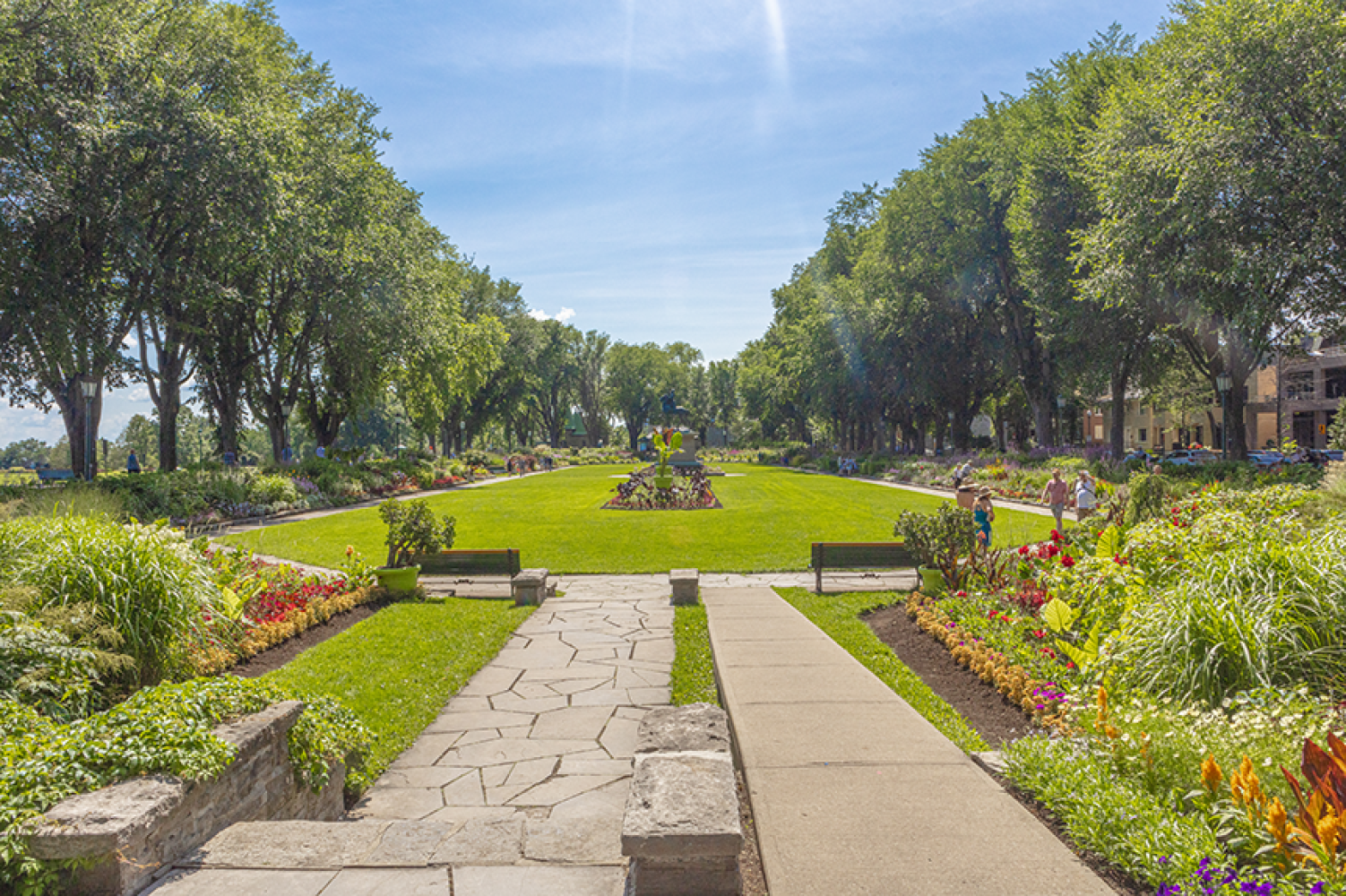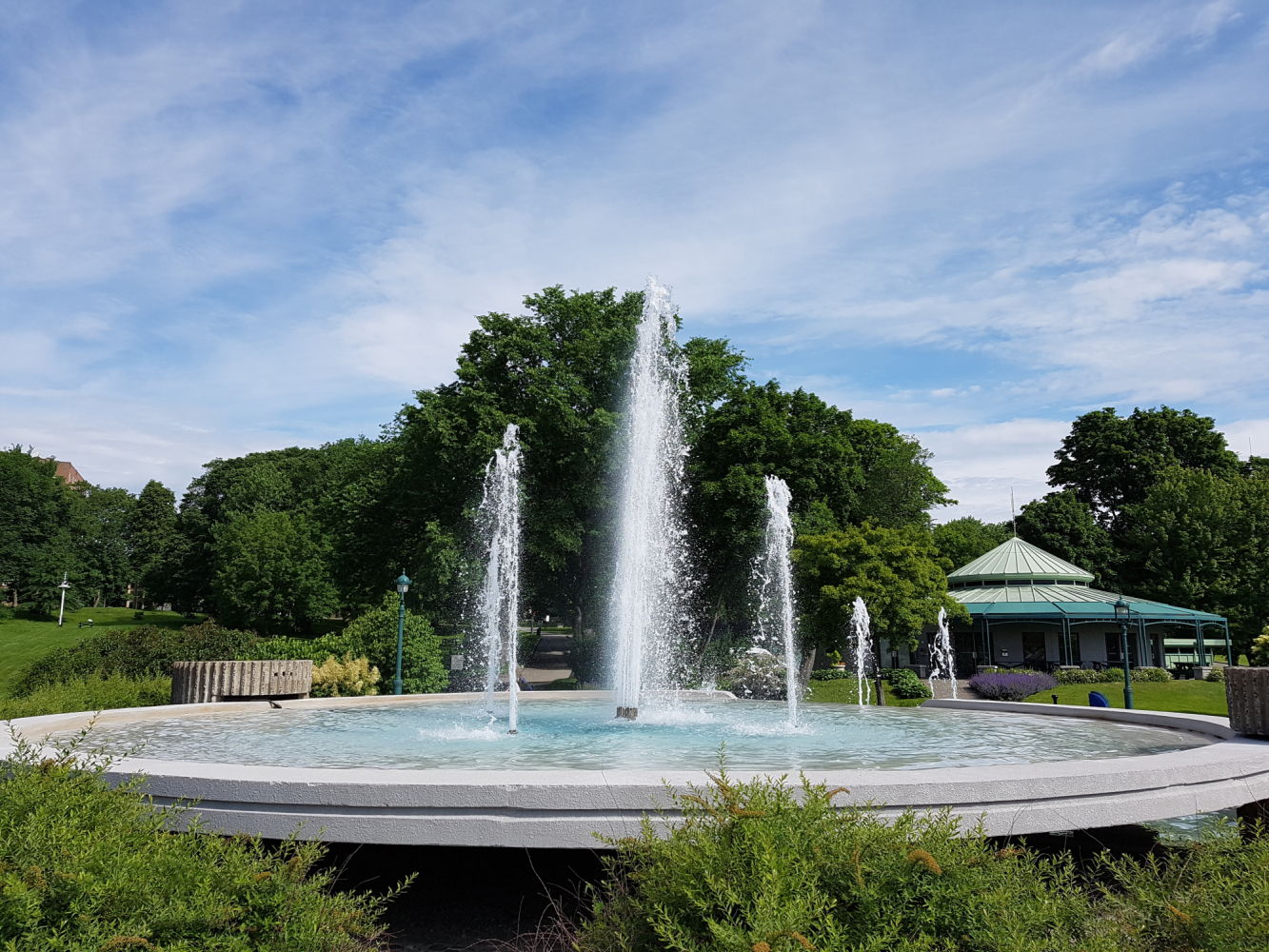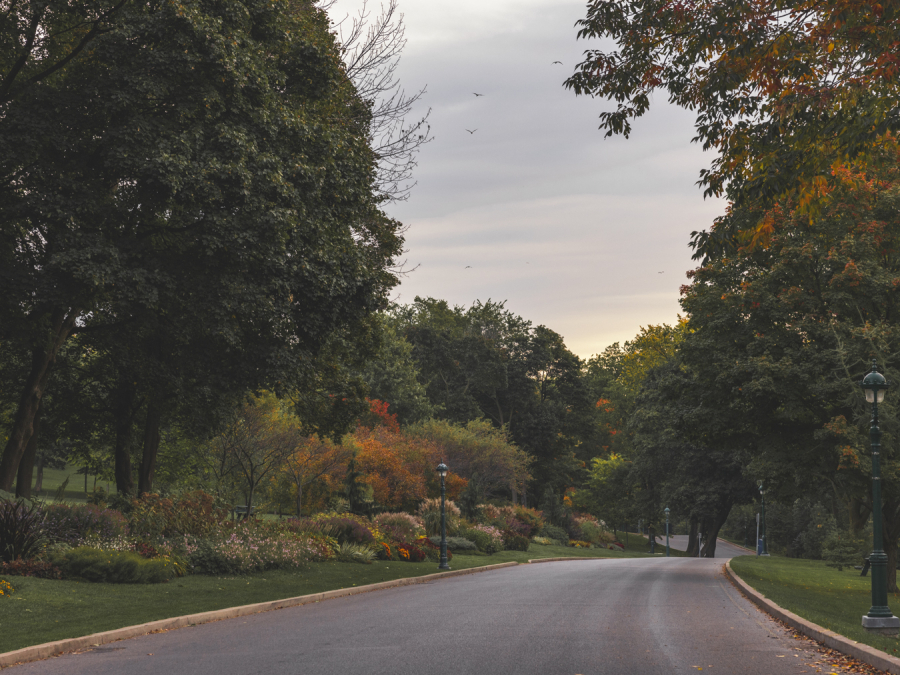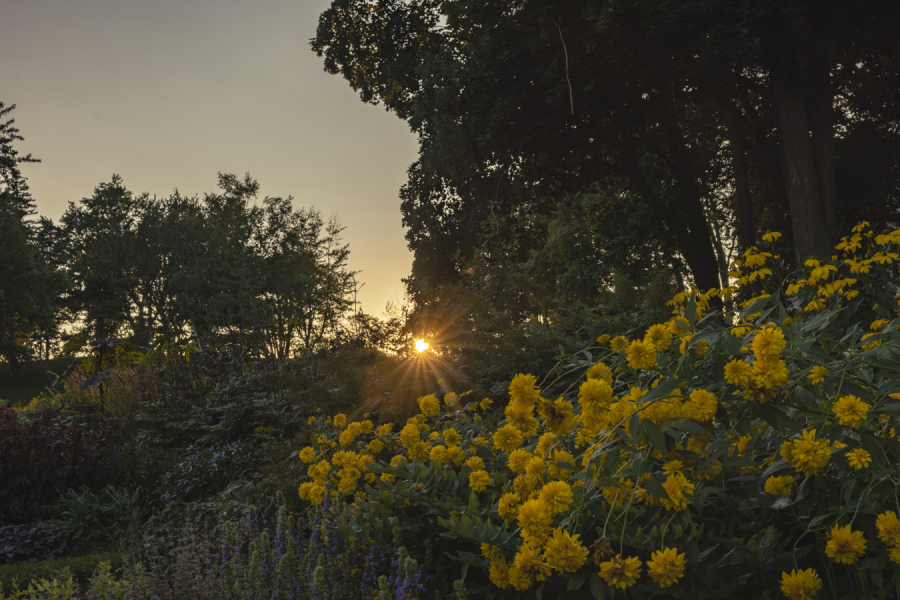A Horticultural Tradition
For nearly 100 years, the National Battlefields Commission has been cultivating all the flowers needed to beautify the park. Its greenhouses, among the oldest still active in Quebec, produce close to 80,000 annual, biennial, and perennial plants.
Aside from the Joan of Arc Garden and the carpet bedding, other parts of the Park have also been beautified by the Plains horticulturalists. Mixed English-style plant beds are found along Ontario Street, at the Centennial Fountain, the Sundial and the Cross of Sacrifice.
Greenhouses of the Plains
All of the plants in the Joan of Arc Garden and the rest of the Park are grown in the Commission greenhouses, located close to the Musée national des beaux-arts du Québec. The largest was built in 1916-17, making it one of the oldest greenhouses still in use today. Thanks to these greenhouses, it is possible to produce a very wide variety of plants and to make them available at just the right time for planting.
Ontario Avenue Flowerbeds
DirectionsJoan of Arc Garden
Created in 1938, the Joan of Arc Garden is the floral gem of the Plains of Abraham. It combines the classic French style with English mixed flower beds. There, you can admire over 150 species: annual flowers, bulbous plants, but especially perennials.

Centennial Fountain
Located on the site once occupied by the Quebec Observatory from 1864 to 1936, the fountain commemorates the centennial of the Canadian Confederation in 1967.



